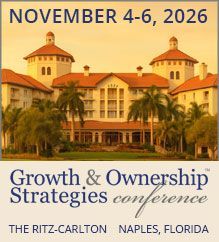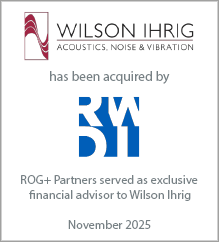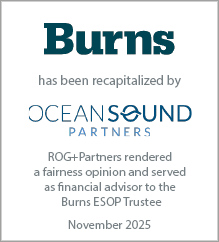Neil Shah is a Senior Director at alliant, specializing in the architecture & engineering, and construction/contracting industries. An engineer by trade, he has worked for a prestigious architecture & engineering firm, as well as a Fortune 500 software and technology company. In his role at alliant, Neil has worked with hundreds of small to mid-sized businesses and has helped claim over $250 million in credits and incentives.
Updated R&D Tax Incentives Can Benefit Many A/E Firms
August 13, 2025
Recent legislation has permanently reversed R&D expense amortization rules, restoring immediate deductibility for research expenses starting in 2025. This major win for architecture and engineering firms brings back pre-2022 expensing rules and creates powerful catch-up opportunities for deductions missed during the 2022-2024 period. These changes represent a monumental opportunity for businesses, but they also introduce a web of complexities that demand careful navigation, making it essential for A/E Firm Leaders to connect with alliant to fully understand and evaluate their options.
One of the most exciting provisions in the new legislation is that companies with average annual gross receipts (AAGR) under $31 million can recover these deductions immediately, while larger businesses can, in general, claim them starting with their 2025 filings. There are other potential avenues for larger businesses to recoup lost deductions, but these are highly fact specific. Whether your business has claimed R&D tax credits in recent years or not, these updates (also referred to as the “Section 174 fix”) will greatly enhance refunds, ensuring you receive the money back that you deserve.
Regardless of your company’s size, how you treated your R&D expenses in 2022-2024, or if you claimed the R&D credit during this timeframe, comporting with the many complicated rules around the 174 fix requires careful planning. However, filing deadlines are around the corner – some as close as September 15th.
What Are the Changes in the New Legislation?
Although the new fix delivers comprehensive relief for businesses impacted by the previously forced amortization rules, the path to maximizing these benefits is far from straightforward. The legislation introduces a host of nuanced provisions, each with its own implications, deadlines, and strategic considerations.
Flexible Options to “Catch Up” for 2022-2024
The new legislation provides multiple pathways to recoup deductions lost during the amortization period. Most companies can claim remaining 2022-2024 deductions in their 2025 filing or spread them across 2025-2026 filings. Companies with AAGR under $31 million can amend their 2022-2024 returns to claim their refunds immediately. Companies falling over this threshold also have several remedies available for their catch-up filings.
Immediate Deductibility Restored (2025 Forward)
Starting with tax years beginning in 2025, businesses can once again fully deduct their R&D expenses in the year they're incurred, returning to the favorable pre-TCJA treatment that supported American innovation for so long, and eliminating this source of disparity between book and tax P&Ls.
R&D Credit Revival
The 174 fix makes claiming the Section 41 R&D Credit for the 2022-2024 tax years much more attractive. Previously, many eligible companies avoided the credit to prevent Section 174 exposure—now, both benefits can work together effectively. Congress understood this concern when drafting the legislation, making the 280C election available for the first time on amended tax returns. Previously, this simplified method for claiming the R&D credit was only available on originally filed returns.
Critical Deadlines
Currently, eligible businesses have a deadline of July 4th, 2026, to amend their 2022-2024 tax returns under the new rules. Some related elections and filings may have deadlines as early as September 2025, but additional deadlines may come up as the IRS releases more guidance. Keep in mind also that each state can elect to follow or diverge from federal treatment of R&D, both in terms of deductions and credits.
In summary, the new legislation gives businesses a "do-over" for the problematic 2022-2024 period while ensuring future R&D investments receive proper tax treatment – but this opportunity comes with a timeframe and a laundry list of rules.
What Do I Need to Do Next?
If you have not filed your 2024 tax return, we encourage you not to do so until you connect with a specialist to explore your options for catching up on lost 174 deductions. Since many A/E Firms can potentially receive significant R&D credits for their day-to-day work, the stakes are even higher. Without expert guidance, businesses risk missing out on substantial refunds and deductions worth six figures or more.
This is where alliant comes in. As the recognized voice of the mid-sized market for over two decades, alliant’s team of former IRS executives, Congressional leaders, and industry veterans has helped tens of thousands of architects and engineers understand the complexities inherent to R&D incentives, ensuring that every option is thoroughly reviewed and every opportunity is maximized.
To learn more about how to fully take advantage of R&D tax incentives, reach out to Ashley Rodriguez at
Ashley.Rodriguez@alliantgroup.com.
Updated R&D tax incentives are just one of many important topics that will be explored at the 2025 Growth & Ownership Strategies Conference, taking place November 5–7 at The Ritz-Carlton Tiburón in Naples, Florida. Learn more and register at conference.rog-partners.com.








